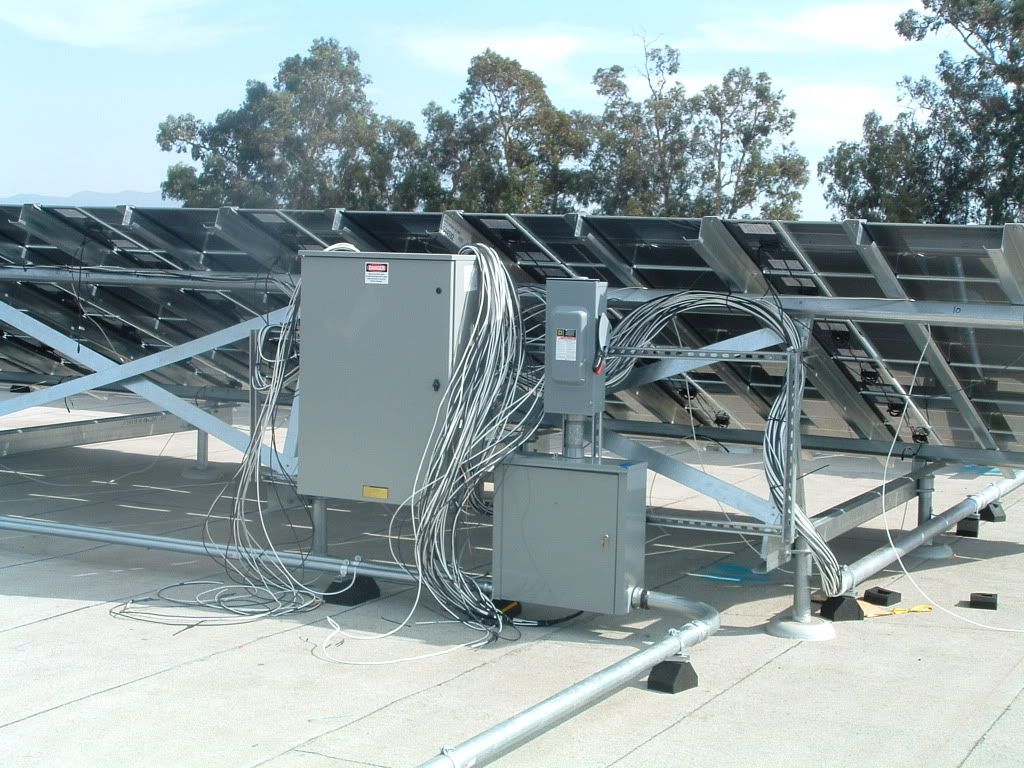eric9822
Senior Member
- Location
- Camarillo, CA
- Occupation
- Electrical and Instrumentation Tech
We have a third party company installing a 1MW Photovoltaic array on one of our buildings. They are currently wiring the individual strings into a distribution panel that I have posted a picture of below. The white wiring is the -DC, the black wiring is +DC. I believe this is a violation of NFPA 70 2005 section 300.3(B). The electrical subcontractor assures me it does not apply since it is a PV DC system. This does not sound right to me but they are ultimately responsible since the equipment will be owned and maintained by a third party. Opinions?




